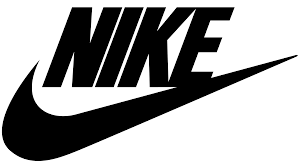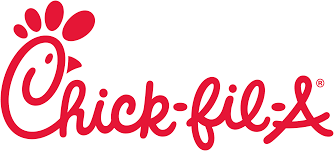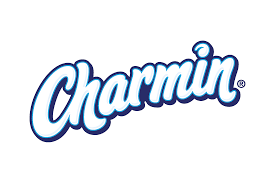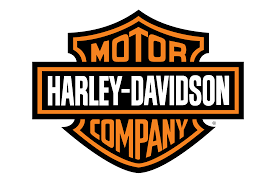TABLE OF CONTENTS
What Is a Brand Voice? | Brand Voice Discovery Questions | How to Find Your Brand Voice |
Examples of Strong Brand Voices | Free 20-Minute Branding Assessment
It's clear that building a unique brand is essential to standing out in your industry. But just as critical — and less often discussed — is developing a distinct brand voice. How you communicate your key messages is just as impactful as the messages themselves.
In this article, we’ll cover everything you need to know to discover and implement a brand voice that resonates with your ideal customers.
What Is a Brand Voice?
When most people think of branding, visual identity often comes to mind first, followed by the core messages that define the brand. However, the tone and voice you use across different media channels are just as essential to your brand’s identity.
Just as a change in tone can dramatically alter how a statement is perceived, your brand’s voice plays a crucial role in shaping how your messages resonate with customers.
There are countless ways to say the same thing. Some brands thrive with a voice that’s edgy and humorous, while others benefit from a tone that’s more professional and authoritative.
Without clearly defining your brand voice, maintaining a consistent message across all your media can be challenging, especially if multiple creators are involved in developing your branding and marketing materials.
Without clear brand voice guidelines, each piece of media your company creates is likely to vary in tone and perception — even if the core messaging stays the same. That’s why defining a consistent and impactful brand voice is essential to building a cohesive branding strategy.
4 Questions to Ask as You Discover Your Brand Voice
At LAIRE, we help clients fine-tune their branding with a comprehensive questionnaire designed to clarify what defines their brand and sets it apart from competitors. This questionnaire covers a wide range of topics, including those essential to discovering your brand’s tone of voice.
Here are a few key questions to consider as you establish your brand voice:

1. What Is Your Brand's Key Message or Mission Statement?
Before deciding how to communicate with your audience, you’ll need to clarify what you want to communicate. What’s the most important thing you want your customers to know about your brand? Once you’ve answered this, determining the best way to convey it will be much easier.
2. What Are Your Brand's Attributes?
Identifying where your brand falls on a spectrum of opposing attributes — such as masculine vs feminine, professional vs casual, or modern vs classic — is an excellent starting point for both developing your branding strategy and defining your brand voice.
3. How Would You Describe Your Brand to a Friend?
If a close friend asked you to describe your brand, how would you respond? The way you’d speak to someone you’re comfortable with, without pressure or ulterior motives, is likely close to the tone your brand voice should adopt. At the very least, it’s a great starting point.
4. Who Is Your Brand's Target Audience?
Understanding your target audience is one of the most important factors when developing your brand voice. For example, middle-aged professionals will respond to a different tone than young customers shopping for lifestyle products.
These are just some of the many questions to consider when defining your brand voice.
In many ways, developing a brand voice is a process of self-discovery. It requires you to fully understand your brand’s messages, audience, and unique qualities to create a voice that aligns with all of these elements. Asking and answering questions, like those in our branding questionnaire, is a great way to start this discovery process.
Steps to Defining Your Brand Voice

1. Define Your Brand
As we’ve discussed, understanding what makes your brand unique is a crucial step in discovering your brand voice.
One effective way to begin this process is by asking and answering the questions in LAIRE's branding questionnaire. Regardless of how you define your brand and its key attributes, this definition will be a key factor when developing your brand voice.
2. Define Your Target Audience
Once again, your target audience is the most important factor to consider when identifying a brand voice that will resonate and encourage purchases.
A great way to better understand your audience is by creating customer archetypes. What does your ideal customer look like? What are their hobbies and interests? What are their fears and concerns? Keep asking questions like these until you have a clear, detailed archetype of your ideal customer.
3. Research Other Popular Brands’ Voices
Many brands have successfully developed unique and effective brand voices, and we’ll explore a few examples in the next section.
To start, research brands in your industry. Review their websites and social media profiles to identify the tone of voice they use consistently across their communications. While you don’t want to copy another brand’s voice, understanding what works for others can help inspire a distinct brand voice for your own business.
4. Create a Test Group
Once you’ve developed a brand voice that reflects your brand’s identity and resonates with your target audience, test it out to gauge the response. You can hire a focus group that matches your ideal customer profile or simply gather a group of friends and family.
Share a few pieces of media created using your new brand voice and pay close attention to their feedback. Make adjustments as needed and test again until you start seeing positive reactions. This process helps ensure your brand voice connects with your audience effectively.
Who Can Define Your Brand Voice?
Business owners and founders are typically in the best position to define their brand voice. However, great results often come from collaboration.
Consulting with people who understand your brand and its mission can be incredibly valuable. Working with your marketing team or agency is a great choice, as they’re skilled at communicating with your target audience. You might also consider talking to close friends and family who understand your brand and can offer honest feedback.
If you're still struggling to define your brand voice, working with third-party branding professionals can be a helpful option.
Examples of Strong Brand Voices
A strong brand voice is crucial, and many companies have developed voices that are instantly recognizable. Here are a few examples of brand tones that may inspire you as you define the best voice for your own brand:
Nike

Nike has crafted a brand voice focused on inspiring athletes to reach their full potential. Their marketing materials consistently use a motivational tone, aiming to connect the brand with success and achievement.
Chick-Fil-A

Chick-fil-A has developed a brand voice defined by Southern hospitality and warm, friendly messaging. While the quality of the food is important, it’s this distinctive brand voice that has played a key role in driving the restaurant’s rapid rise in popularity within the fast food industry.
Charmin

Charmin’s brand voice is defined by lighthearted bathroom humor that’s both playful and appropriate. Their #TweetFromTheSeat campaign and commercials featuring animated bears are prime examples of how they bring this voice to life.
Harley-Davidson

Harley-Davidson is a prime example of how a confident, bold brand voice can resonate with the right audience. The company understands its customers and the reasons they choose Harley-Davidson, communicating with a tone that positions the brand as one for the daring and adventurous.
Boost Your Business With Expert Branding Insights
Discovering your brand voice is a crucial step in creating a branding strategy that resonates with your ideal customers and drives them to take action. At LAIRE, we specialize in helping businesses across industries develop branding guidelines, including powerful and effective brand voice strategies.
To learn more about improving your brand and crafting a compelling brand voice, take advantage of our free 20-minute branding assessment. Simply fill out the form, and a LAIRE branding expert will provide personalized advice to help fine-tune your company's branding and boost your bottom line.


